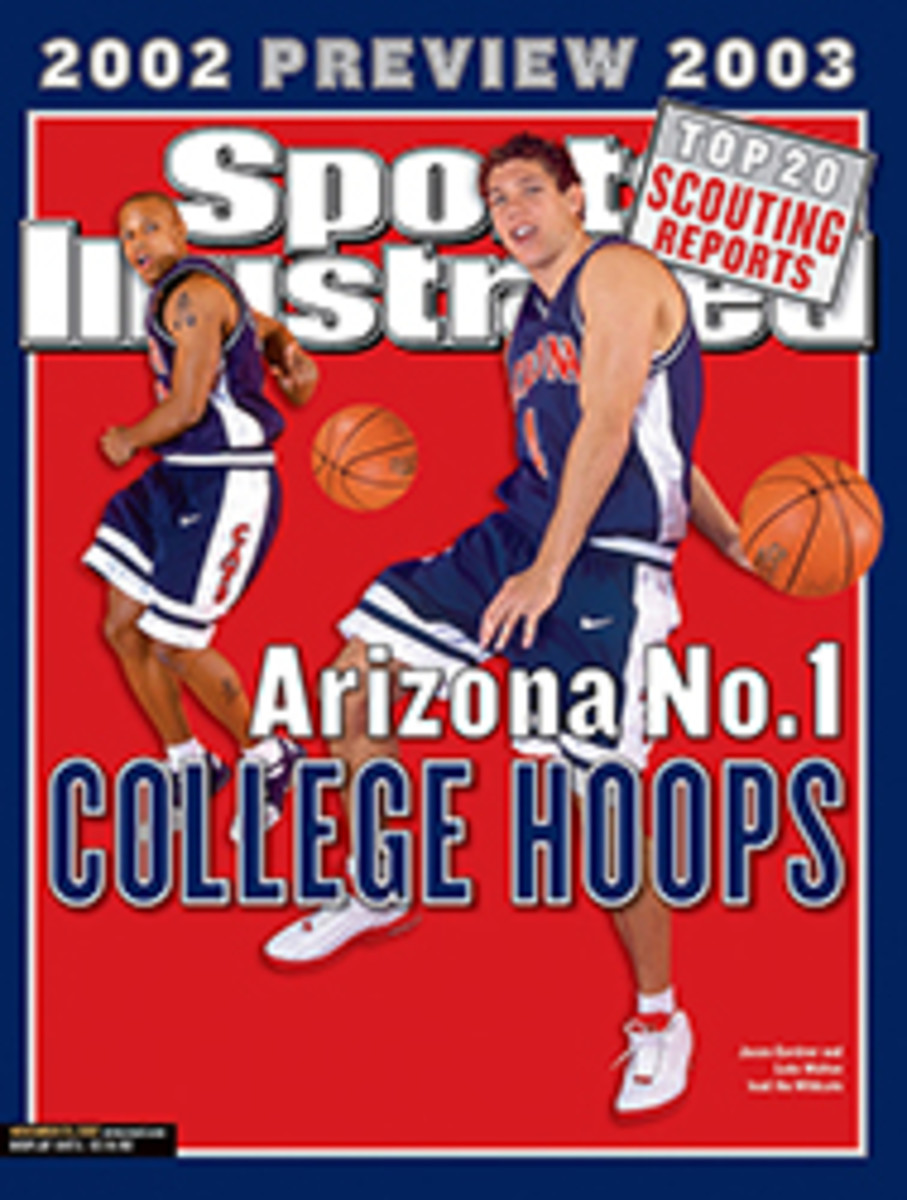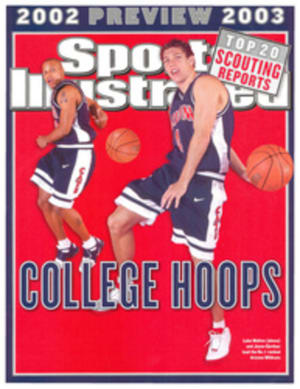
Perp Prep At Glen Mills, a school for troubled teens, a golf course helps change lives
Call him Ismael, because that's his name, and because his burdens
border on the Biblical. "I have a slicing problem," says Ismael
Morales. There is despair in his voice, as if this swing scourge
were his shame alone.
That Ismael--certified by the Pennsylvania justice system as a
juvenile delinquent and dispatched to reform school for a
straightening out that had nothing to do with his swing--can be
bedeviled by the flight of a golf ball is something of a miracle.
Even more improbable is that the setting for Ismael's struggle, a
promised land known as the Golf Course at Glen Mills, sits in the
middle of the oldest continuously run reformatory in the U.S.
Located outside Philadelphia, Glen Mills Schools opened its
18-hole classroom two years ago. The course serves as an outdoor
vocational training center on which about 10% of the school's 800
teenage students learn the art and science of turf management, as
well as how to run a pro shop. To area golfers the Golf Course at
Glen Mills is nothing more than an outstanding daily-fee track,
set on 235 acres of beautifully sculpted hills, dales, woods and
wetlands. But for the kids who work there the course "is a new
start," Ismael says.
In July 2001, Ismael, now 18, was sentenced to 18 months at Glen
Mills after being convicted of selling drugs, one more misstep in
a troubled youth spent growing up in North Philadelphia. Now he
dreams of studying agronomy at Penn State and someday becoming a
superintendent at his own course. (Other Glen Mills alums are on
their way to realizing that goal, having gotten jobs at courses
in Maryland, Michigan, New Mexico, New York and Ohio as well as
in Pennsylvania.) Just as unlikely: A onetime drug dealer from
the mean streets is now addicted to a country-club sport.
"It's a high-class game," says Ismael. "I never could have
pictured myself playing it." But not long ago he had his best
score--now measured in pars and bogeys instead of ounces and
grams--a 48 for nine holes. "It all makes me feel pretty good
about myself." Maybe for the first time, and that's the point.
"This isn't really about golf," says Gary Ipock, the managing
director of Glen Mills Schools. "This is an investment in
students and their futures. If we can help these kids learn a
skill--even if they never use it when they leave--we've still
introduced them to a work ethic."
Early on a Friday morning in September, Ismael exhibited his work
ethic on a triplex mower, cutting fairways. He seemed almost
ghostly weaving through the mist, the hood of his black
sweatshirt tightly wrapped to ward off the cold. Ismael had
quickly mastered this tricky machine, the same way that he had
mastered the steps that advanced him to this point: working on
bunkers, repairing divots and manicuring greens and tees. "He's a
natural," says John Vogts, the course superintendent.
Today, Ismael is even more focused than usual. A handful of PGA
Tour pros who missed the cut at the Pennsylvania Classic are to
play Glen Mills as part of the Tour's Saturday Series pro-am and
then conduct a clinic for the Glen Mills Battling Bulls golf
team. Ismael wants the grounds to shine. "This isn't any course,
it's our course," he says proudly.
That this course can work such wonders shouldn't be a surprise,
considering how little about Glen Mills fits the reformatory
mold. Founded in 1826 by the Quakers as the Philadelphia House of
Refuge, the school moved from its original location in the late
1880s, when its progressive administrators decided that the
countryside might be a better environment for reforming urban
troublemakers. (Think of a 19th-century Boystown.) The famous
Smith Brothers were impressed enough with the idea to dip into
their lozenge fortune and cough up the funding for the stone
chapel (now the library) that anchors one end of the central
quad. By the early 1900s the school had spread out across nearly
700 acres of then rural Delaware County.
By the 1970s, however, Glen Mills had degenerated into a
reformatory cliche. Progressive had given way to penal, and
buildings and morale were falling apart. Most courts had stopped
sending kids there. (Nonprofit and privately operated, Glen Mills
is funded mainly by the per diems it receives from 28 states to
house students, all of whom are 15-to 18-year-old boys.)
Enter C.D. (Sam) Ferrainola. When he was named executive director
in 1975, Glen Mills had only 30 students and was nearly bankrupt.
A sociologist, Ferrainola saw kids as basically good people, not
as deviants. He believed that changing the peer pressures around
them from anti-to pro-social would also change their behavior.
Harsh treatment wasn't the answer. Instilling pride, teaching
trust and developing skills to help a kid relate to others was.
Ferrainola's first act--removing the bars from the windows and
the locks from the doors--reinforced the message. "We still have
no fences and no security force," says Ferrainola, now 71,
through a haze of cigar smoke in his office beneath the school's
distinctive clock tower. "Students freely walk the campus as they
would at any private school. We've worked hard to change our
image from a terrible reform school to a fine private school.
Period." Indeed, the campus, a mix of redbrick dorms, classrooms,
vocational shops and athletic facilities, looks more like Andover
than Alcatraz. Courses range from remedial to college prep.
(About 15% of the boys go on to college, the rest to trade
schools, jobs or back to their old high schools.) The vocational
curriculum includes, in addition to golf, courses in optics,
carpentry, auto mechanics, welding and journalism. Glen Mills
also successfully competes in all the major sports, despite the
disadvantage of not having many kids return for a second season.
Says Ipock, "We're simply giving them something most have never
had: a chance to succeed." It's working. Only 30% of Glen Mills
students become repeat offenders, a significantly lower
percentage than the national average at state-run institutions.
The idea of building a golf course at Glen Mills had been kicked
around for years, but conditions were particularly favorable in
the mid-'90s. The surrounding area was experiencing phenomenal
growth, and there was pressure to develop the school's property.
Three selling points clinched the deal. First, greens fees could
defray costs and generate scholarship money. Second, the
public-relations potential seemed off the charts. Finally,
allowing the students to help build the course would be an
invaluable learning experience.
Vogts remembers the first day of construction, in 1998, when he
took a group of students to the woods to set up fencing. He was
new to the school and knew the kids only by reputation. "I was
deathly afraid of giving them razor knives," he says. "I didn't
know if they'd run off or what." No one did.
Designed by Bobby Weed, the course today averages 23,000 rounds a
year, grossing more than $2 million. Golf Magazine ranks Glen
Mills No. 5 on its list of the Top Ten You Can Play, and playing
privileges are extended to all of the school's students.
Golfers by the score are driving through the stone pillars that
mark the entry to the Golf Course at Glen Mills, then winding up
the hill past the home hole to the bag drop in front of the
redbrick, one-story clubhouse. Mercedes, Lexuses, BMWs, Range
Rovers and the like have their trunks popped, and the Glen Mills
kids, some of whom might have stolen similar makes and models
only months before, are reaching in, grabbing golf bags and
politely welcoming the players to the course.
Course manager Paul Stuhmiller loves juxtaposing these kids and
these golfers. "You have people coming here and laying down 90
bucks a round, and they find themselves talking to a kid they'd
normally cross the street to avoid," he says. "I love it when
people come here and don't know these kids have been committed by
the juvenile justice system. That's when I see we're on target."
Bob Pfister, a club pro for four decades and now the head man at
Glen Mills, has been amazed at how quickly the kids--even those
who are not part of the vocational program--have picked up the
game. For the last two years the 20-man golf team has had a
winning record in a league filled with country-clubbers. When
Tour regulars Eric Booker, Jeff Gove and John Morse gave their
clinic on the range following the Saturday Series, they were also
impressed. "You mean these guys are beginners?" asked Booker,
watching the Battling Bulls warm up.
When Booker asks for questions, Ismael brings up his slice. The
pro watches carefully as Ismael bananas seven-iron after
seven-iron. The pro makes a small adjustment in Ismael's grip,
another to his backswing, then slowly moves the club with Ismael
to help him feel the change.
At first Ismael chunks several shots, always carefully replacing
his divot--this remains his course. Then the heavens part and his
shots begin to fly high and straight. Ismael beams.
Three weeks later that minor victory is followed by a more
profound one--Ismael's sentence at Glen Mills comes to an end
months early. Through the intercession of Pfister and Vogts, a
job awaits at nearby Llanerch Country Club, in Havertown, site of
the 1958 PGA.
"It's time for me to experience the world and find out how it
really is," Ismael said before leaving Glen Mills. "I want to go
about my life the right way now, not the wrong way. The Mills
taught me everything I need to succeed." Such as? "Learning how
to respect and give respect. Being responsible to myself and my
peers. Taking pride in my work and myself. Maintaining a golf
course well."
If that last bit seems incongruous, it shouldn't. At Glen Mills
golf is life, and life is golf.
COLOR PHOTO: PHOTOGRAPHS BY AL TIELEMANS GOLF MAJOR About 80 of the boys doing time at Glen Mills maintain the two-year-old course as part of their curriculum.
COLOR PHOTO: PHOTOGRAPHS BY AL TIELEMANS STUDY UP Boys from 28 states are learning new skills at Glen Mills.
COLOR PHOTO: PHOTOGRAPHS BY AL TIELEMANS ON SALE Pfister (right) heads the student-run pro shop.
COLOR PHOTO: PHOTOGRAPHS BY AL TIELEMANS THE MAN Ferrianola removed fences to build trust.
COLOR PHOTO: PHOTOGRAPHS BY AL TIELEMANS ON THE JOB Ismael graduated early to a position at another course.
When the kids began to build the course, says Vogts, "I was
deathly afraid of giving them razor
knives."
"It's time to experience the world and find out how it really
is," Ismael says.

